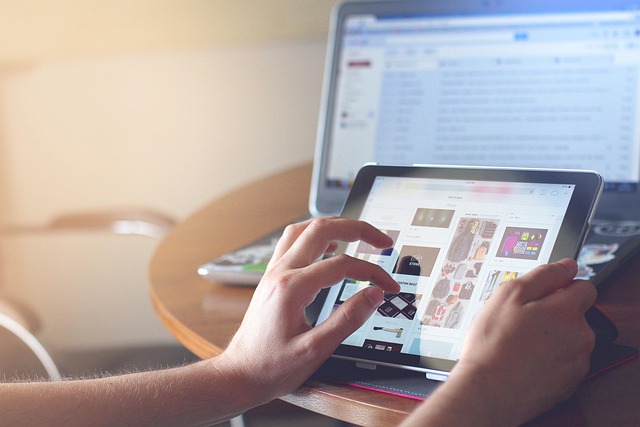In an age where smartphones, laptops, and tablets are woven into the fabric of daily life, the idea of a digital break has moved from novelty to necessity. A digital break is more than a brief pause; it is a deliberate, structured withdrawal from the constant stream of notifications, newsfeeds, and virtual interactions that shape our routines. When the noise of screens begins to drown out the quieter, more meaningful rhythms of human experience, a conscious step back becomes essential for psychological well‑being and social connection.
Why the Need for a Digital Break Has Grown
Research on screen time and mental health reveals a growing correlation between prolonged device use and symptoms such as anxiety, depression, and decreased attention span. Social media platforms design algorithms that keep users engaged for hours, while work and educational settings increasingly rely on instant communication tools. The cumulative effect is a sense of always being “on.” A digital break offers a reset, allowing the mind to decompress and re‑orient toward real‑world interactions.
Identifying the Signs You Need a Digital Break
While everyone experiences digital fatigue differently, several common signs suggest it’s time to step away:
- Frequent physical symptoms such as headaches, neck strain, or eye irritation.
- Difficulty concentrating on tasks that do not involve a screen.
- Feeling restless or irritable when unable to check notifications.
- Reduced quality of relationships with family and friends.
- A general sense of detachment or disengagement from the present moment.
Recognizing these indicators is the first step toward planning a meaningful digital break.
Planning Your Digital Break
Creating a structured approach can make a digital break more effective and sustainable. Begin by setting clear objectives: whether you aim to reduce overall screen time, improve sleep, or strengthen personal relationships, your plan should reflect these goals.
Key components of a solid plan include:
- Timeframe – Decide whether you’ll take a day off, a weekend retreat, or a recurring weekly break.
- Boundaries – Establish no‑device zones (e.g., bedroom, dining room) and communicate these limits to co‑habitants.
- Alternative Activities – Prepare a list of non‑digital pursuits such as walking, reading a paperback, or practicing a hobby.
- Support System – Involve friends or family who can help enforce boundaries and offer encouragement.
Choosing the Right Digital Break Strategy
There is no one-size-fits-all method. Some find success with a complete digital detox—no phones, no laptops, no tablets—while others opt for a “digital Sabbath,” where only essential communications are allowed. A phased approach can also work: begin with short intervals of device‑free time and gradually extend them.
Whatever strategy you choose, the goal is to create space for reflection, physical movement, and authentic interaction—elements that are often suppressed in a digital‑centric lifestyle.
The Psychological Benefits of a Digital Break
Stepping away from screens triggers a cascade of positive mental health outcomes. By eliminating the constant barrage of notifications, the brain has the opportunity to reset its dopamine system. This can reduce cravings for instant gratification and restore motivation for longer, more complex tasks.
Additionally, a digital break enhances emotional regulation. When people are less distracted by online stimuli, they become more attuned to their own feelings and those of people around them. This heightened awareness can deepen empathy, improve conflict resolution, and strengthen overall life satisfaction.
Reconnecting With the Physical World
One of the most profound impacts of a digital break is the rekindling of sensory experiences. In a world where we often perceive reality through a lens of pixels, physical touch, scent, and sound return to prominence during a break. Walking in nature, savoring a meal prepared with fresh ingredients, or listening to music in its original analog form—all these activities help ground us in the present.
“When we let go of the digital overlay, we rediscover the richness of the world that lies just beyond the screen.”
Technology’s Role in Human Connection
It would be simplistic to dismiss technology as wholly detrimental to human relationships. In fact, many digital tools have expanded the ways we communicate across distance, keeping family and friends connected. The challenge lies in balancing these conveniences with the need for face‑to‑face interaction.
During a digital break, one can assess which technologies truly enhance personal connections and which merely fill idle time. This reflective practice can inform a more intentional use of devices in the future.
From Virtual to Authentic Interaction
When conversations shift from quick text exchanges to thoughtful, in‑person dialogues, relationships often deepen. The absence of device distractions encourages active listening, reading body language, and responding with genuine empathy. These skills, cultivated during a digital break, can be carried forward, making daily interactions richer.
Moreover, the experience of sharing a quiet moment without phones can foster a sense of community and belonging that digital platforms struggle to replicate.
Implementing Sustainable Digital Habits Post‑Break
After completing a digital break, the objective is to integrate the lessons learned into everyday life. Here are strategies to maintain a healthier relationship with technology:
- Set Screen Limits – Use built‑in device features to cap usage per day.
- Schedule Device‑Free Times – Designate periods such as meal times or the first hour after waking as no‑screen zones.
- Prioritize Physical Activities – Incorporate exercise or creative hobbies that do not require a screen.
- Mindful Consumption – Be intentional about the content you consume; ask whether it adds value to your life.
- Regular Digital Check‑Ins – Periodically evaluate how technology influences your mood and relationships.
Creating a Digital Break Culture
Encouraging others to adopt digital breaks can transform workplace and family environments. Companies can implement policies like “tech‑free lunch breaks” or “no‑email Fridays,” while families might agree to a nightly “screen curfew.” When these practices become normalized, the collective mindset shifts toward valuing human connection over constant connectivity.
Conclusion: Reclaiming Humanity Through Digital Breaks
Digital breaks serve as a powerful antidote to the relentless pace of modern life. By intentionally stepping away from screens, individuals reclaim their attention, re‑connect with the present, and restore the depth of their relationships. While technology offers unprecedented convenience, the practice of a digital break reminds us that the most vital human experiences—conversations, empathy, shared silence—are not mediated by pixels. In cultivating these spaces, we find that reclaiming our humanity begins with a simple, deliberate pause from the digital world.




